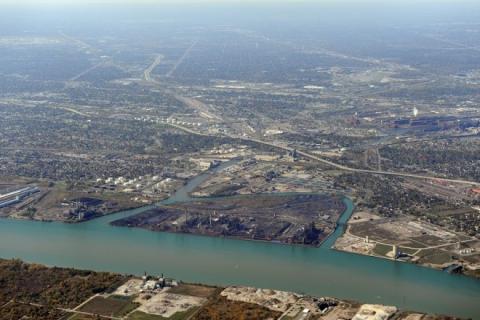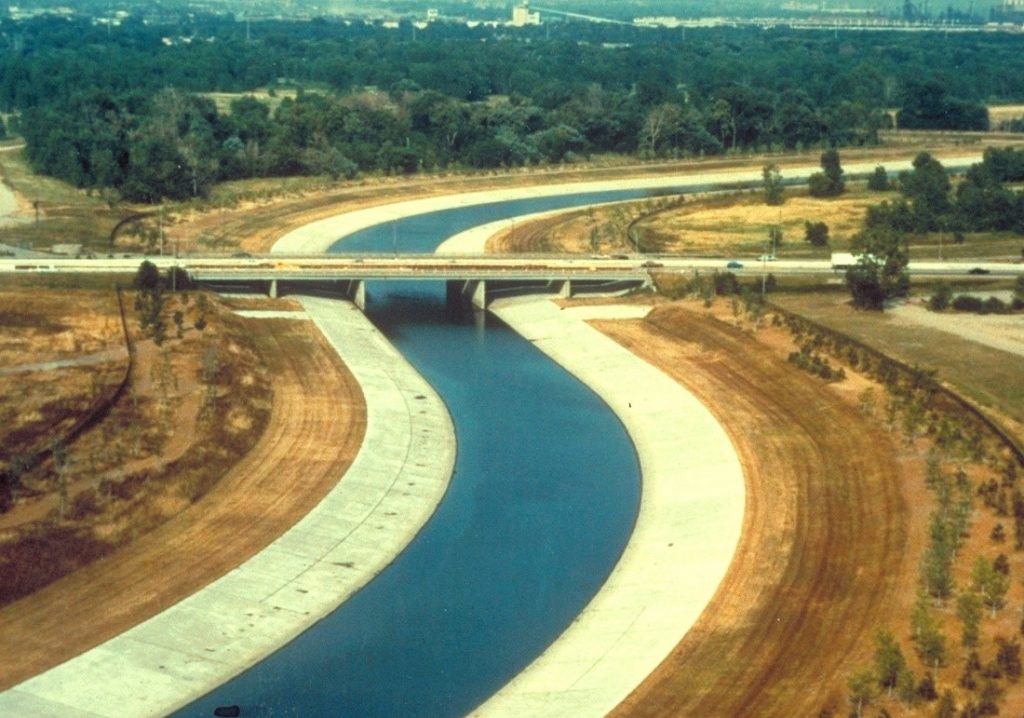

When a project to remove contaminated sediment from Michigan’s Rouge River gets underway, it will pull nearly a century of pollution with it, bringing a longstanding effort to rehabilitate and clean up the waterway one major step closer to its goal.
The sediment removal project is expected to begin as soon as the fall, said Jennifer Tewkesbury, Michigan Department of Natural Resources (DNR) Area of Concern coordinator for the Clinton and Rouge Rivers. It will take place in the Lower Rouge River’s old channel region, located near the industrial Zug Island and the Detroit River. Tewkesbury said the project is in its final design and shoreline stabilization stage, and that sediment removal is expected to begin after that’s finished. According to the US Army Corps of Engineers, it should be completed by fall 2019. The sediment removal part of the old channel work will cost $22-25 million via the US Environmental Protection Agency (EPA), with additional funding from Honeywell.
During the removal process, a curtain is dropped into the water to prevent any silt from escaping while a clamshell scoop is dropped in by a barge. The scoop pulls out the material and deposits it on another barge for disposal at the Army Corps’ Pointe Mouillee confined disposal facility. Once this process is completed, sand, clay and rock will be placed over the remaining sediment to serve as a cap and prevent any contaminants that were missed from escaping or otherwise impacting aquatic life. About 53,500 cubic meters (70,000 cubic yards) of sediment will be removed through this process, enough to fill a football field almost 11 meters (12 yards) deep.
A different 8-kilometer (5-mile) stretch of the Lower Rouge River’s main channel from the river mouth to Dearborn needs contaminated sediment removed too, but the DNR is still building baseline data of the contamination throughout that stretch and working on funding from nongovernment sponsors to complete it. An assessment is ongoing for the main channel sediment removal project, Tewkesbury said, which she expects could end up costing tens of millions of dollars.

According to an EPA official, the contaminated sediments in the main channel are the result of contamination from Ford Motor Co., Marathon Oil and other major industries that have existed along the water. Experts are trying to figure out who is responsible for what amount of contamination so that funding cleanup can be worked out.
While the sediment contamination is the most high profile work being done on the Rouge, Tewkesbury said there are multiple habitat restoration projects that have either been completed, are being done now, or are scheduled for the coming years, with funding through the US Great Lakes Restoration Initiative.
Currently, three habitat projects are underway. The first is building a fish passageway around a dam on the Henry Ford estate in Dearborn, which will reconnect migrating fish from lower portions of the Rouge River to the broader system. Further upstream at the Greenfield Village Oxbow, an outdoor museum is reconnecting fragmented parts of the river to the rest of the upstream Rouge system, allowing migrating fish a place to rest and move on.
Finally, Tewkesbury said, the DNR and the US Army Corps are discussing ways to enhance habitat around a 6.4 km (4- mile) flood control structurethe Corps built in the 1960s-70s.

"(The Army Corps) straightened the river and put in a concrete channel,” Tewkesbury explained. “Looking back 40 years, that wasn’t the best thing for habitat. Even if fish get into the channel it’s a long way to go, and it’s stagnant and barren for them.”
That project is still in the early stages, with experts doing habitat and hydrology sampling to figure out the best way to improve conditions in that channel without losing out on flood control, since the area surrounding it has been built up. Potential solutions range from removing concrete to add habitat and reconnect small portions of the floodplain, and targeting the needs of specific fish species, Tewkesbury said.

For these habitat projects, the Wayne County Parks & Recreation Department has been helping out, Tewkesbury said, as a number of the projects have taken place on parks property. Downstream communities (such as Inkster and Dearborn) that are more heavily impacted by the river’s water quality issues than those upstream have been involved as well.
The Rouge River has been an area of concern long before the formal “Area of Concern” (AOC) designation was announced as part of 1987 Great Lakes Water Quality Agreement revisions. Running through heavily industrial parts of Dearborn and Detroit, the river’s connection to the Detroit River and the Great Lakes has made it part of a major port system for manufacturing companies. In the era before any real environmental regulations in the United States, the river became a dumping ground for metals, oil and municipal sewage systems. On top of that, its urban course led to severe habitat degradation in its lower regions.
Over the years there have been multiple efforts to heal the waterway and restore it to a fishable and swimmable location, as agreed upon in the original 1972 Great Lakes Water Quality Agreement. The first major effort came in 1992 with the Rouge River National Wet Weather Demonstration Project to keep combined sewer overflows caused by heavy rain events from pushing raw sewage into the river. The project ran until 2014, and was a joint effort between state, federal and local agencies funded primarily through the EPA. An EPA official said that it didn’t reduce the amount of water entering the Rouge River system, but the reduction in untreated waste reaching the water was dramatic.
Tewkesbury is optimistic about the rehabilitation and restoration of the Rouge River. She said all the restorative actions the river needs should be doable in the next decade. At that point, it would be monitored to determine whether it can be delisted as an AOC, which requires a request for review and comment to the IJC by the governments of Canada and the United States.

Kevin Bunch is a writer-communications specialist at the IJC’s US Section office in Washington, D.C.




